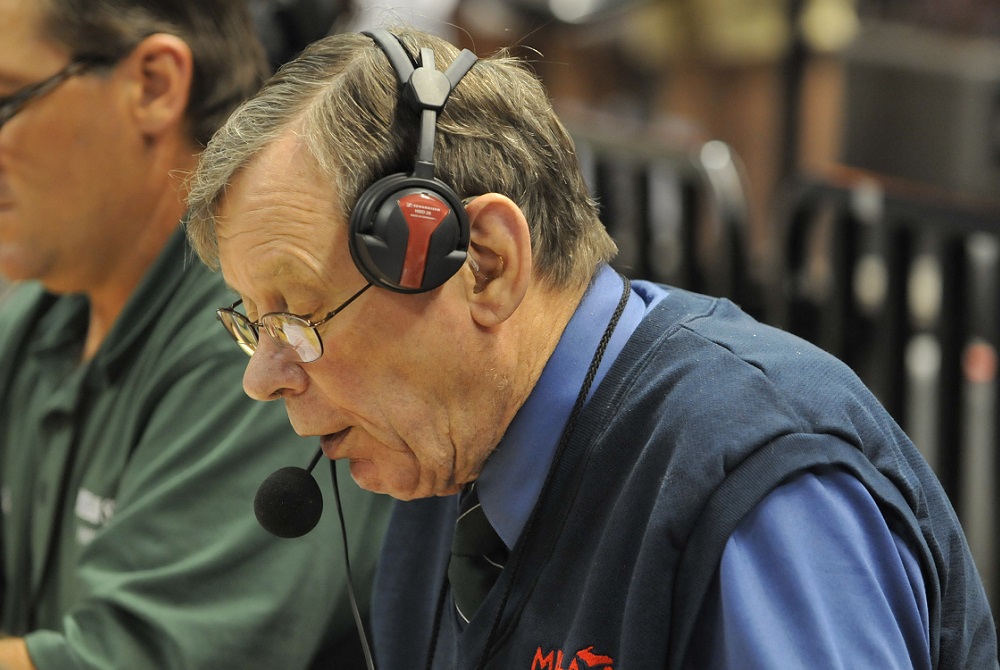
Friday Night Football
September 23, 2016
There continues to be among high school athletic administrators a great gnashing of teeth over encroachment of televised college football on the Friday night turf that long tradition reserves for high school football games. Little by little and year by year, college games drift to all times of the day and all days of the week, and Friday night is no longer hallowed ground for the high school game alone.
The Friday night intercollegiate fare remains mostly irrelevant games by second tier teams, but televised nonetheless because of the overabundance of production entities and networks seeking live sports events. But high school leadership is right to be on guard.
Known to very few people is a million dollar offer in the 1970s by then NCAA Executive Director Walter Byers to the National Federation of State High School Associations if it would not oppose televised college football games on Friday nights. Clifford Fagan, then executive director of the National Federation, declined the offer from his good friend; and the mutual respect these two men enjoyed brought an end to the negotiation.
Then, as now, the National Football League was prohibited by law (part of its anti-trust exception) from televising games on Friday nights and Saturdays from mid-September through mid-December where the broadcast would conflict with a live high school or college game. Under Byers, and until the NCAA lost control of intercollegiate football broadcasting as a result of a legal challenge by what was then called the College Football Association, college football leadership voluntarily gave high school football the same deference on Friday nights that the NFL did under federal law.
Today, major college football is such a ravenous revenue beast that it will schedule play at any time on any day in any location, televising every game – on college conference-controlled networks if the matchup is not attractive enough for national or even regional broadcasts. The Friday night high school football tradition can expect to be trampled as college football swarms and grunts around the feed trough like hungry hogs.

In Memoriam: Erik O. Furseth (1930-2022)
By
Geoff Kimmerly
MHSAA.com senior editor
March 1, 2022
For 50 years, Erik O. Furseth’s voice chimed throughout MHSAA and Michigan State University athletic events. That voice surely will continue to live in the memories of the many who cherished listening to him, as he died Monday evening at the age of 91.
Furseth began as the public-address voice of MHSAA Boys Basketball Finals in 1968 and continued well into his 80s as those games moved from Jenison Field House to other locations across the Lower Peninsula and eventually settled into Breslin Center. He also was the longtime MHSAA football championship game voice going back to their days at the Pontiac Silverdome and provided the narration for MHSAA Baseball Finals for a decade. He announced his last MHSAA event in 2018.
An MSU basketball player during the early 1950s, the Cleveland Heights, Ohio, native played in the Spartans’ first Big Ten game in 1951. A forestry student initially, Furseth switched to communications. He later became a legendary rock-n-roll radio DJ in Lansing, and for a decade hosted Saturday night dances at the Lansing Civic Center that drew 1,000 teenagers a night – and a surprise performance by a young Stevie Wonder.
Furseth’s voice continued to be known particularly by Spartan fans as the homecourt voice for MSU basketball from 1968-2002 and MSU football from 1971-98. For more, see this feature from the MHSAA Basketball Finals programs written in 2013.
Furseth moved from East Lansing to Traverse City about 25 years ago. Click for his obituary and funeral arrangements.
Longtime MHSAA Public Address announcer Erik O. Forseth died Monday evening at the age of 91. Nearly every MHSAA Boys Basketball Final for 50 years started the same way – with Erik introducing both teams. Our thoughts are with his family and friends. pic.twitter.com/CA5iRKt39t
— MHSAA (@MHSAA) March 1, 2022

